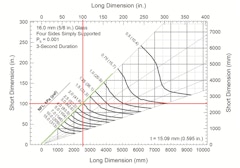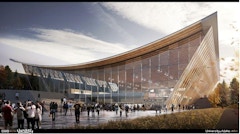
Envelope For Service
Envelope-for-Service (E4S) is a novel business model developed with the aim of converting the building façade from a traditionally traded good to a

Envelope-for-Service (E4S) is a novel business model developed with the aim of converting the building façade from a traditionally traded good to a

ASTM published the first version of ASTM E2461-05: Standard Practice for Determining the Thickness of Glass in Airport Traffic Control Tower Cabs in

In 1871, a fourth level Architecture course was offered in New York City that instructed on topics such as heating, ventilation and circulation of

What was once an accepted reality in heat-treated exterior glass, optical disturbances in glass are under increasing scrutiny by developers,

Kintsukuroi, the Japanese art of repairing broken pottery with powdered precious metal, is a practice of celebrating the life and history of an
The iconic building principal incentive is to be visually attractive or stand out, for this purpose three main features must be accomplished: have a



Model building codes and standards in the United States use a probabilistic model to define glass load resistance (LR). In general, these model
Coauthors: Mary Ben Bonham, Department of Architecture + Interior Design, Miami University, Oxford, OH, USA [corresponding] [presenting at the
Integration and interoperability between Building Information Modeling (BIM) and Building Energy Modeling (BEM) tools pose major challenges for the

Designing a multi-functional building envelope as an architectural façade, environmental interface and solar collector is a multi-objective

This case study provides an overview of building hybrid curtain wall system and future opportunities for the use of timber. It will also review the

Today, about 40% of all buildings in the U.S. still have single-pane windows, and ~70% of the existing building stock is estimated to suffer from


The traditional building facade as a permanent construction does not actively respond to the differing needs from varying weather conditions.
The use of glass in windows and curtain walls in residential as well as in commercial buildings needs to be designed very carefully. In addition to

Designing a sustainable rainscreen wall assembly has become an essential part of most new construction projects. Industry principles and energy codes

Developments in performative computational analysis, mass customization, and complex form manipulation revolutionized building envelope design
Concerns over time-dependent argon permeation through the perimeter edge seals of insulating glass units (IGUs) led the authors to utilize two